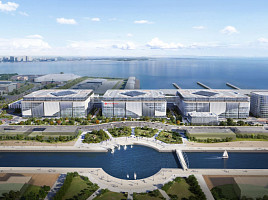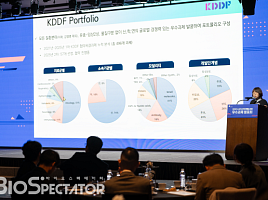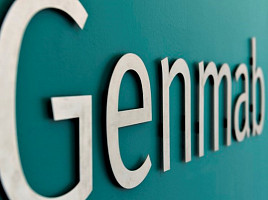기사본문
Samyang Biopharm adds Nanocage-Based Immunotherapy targeting CD47 in TME
입력 2018-02-14 07:57 수정 2018-02-14 07:57
바이오스펙테이터 Sungmin Kim 기자

Samyang Biopharm has been reshaping its immuno-oncology strategies for harnessing the immune system against cancer, by maximizing the effect of newly developed chemotherapies in combination with its own anticancer drugs, via a novel drug delivery system (DDS) technology.
As the first initiative, the company announced on January 16 that it had signed a technology transfer agreement with the Korea Institute of Science and Technology (KIST), regarding a new nanocage technology that has been developed by a research team led by Dr. Kim In-San of KIST’s Center for Theragnosis.
Interestingly, this nature-derived ferritin protein-based nanocage not only efficiently presents ligands that inhibit CD47 (Cluster of Differentiation 47), an immune checkpoint molecule, but also delivers drugs that induce immunogenic cancer cell death.
Given its own anticancer drugs (e.g., paclitaxel and doxetaxel), Samyang Biopharm plans to verify the usefulness of this new technology, before developing new forms of treatment through clinical trials.
Enhancement of tumor cell phagocytosis by binding to CD47 in the tumor microenvironment
Nanocage proteins form a macromolecule via the regular self-assembly of subunits. The nanocage contains a specific substance in its otherwise empty internal space. A typical example is ferritin, a reservoir of iron ions, which has a 24-subunit assembly to form a nanocage of 12 nm in size.
The KIST team inserted signal-regulatory protein alpha (SIRPα) into the surface of ferritin nanocage as a CD47 antagonist. To ensure higher antitumor activity, the team used SIRPα variant (FHSirpα) to ensure better binding affinity to CD47. For efficient loading of FHSirpα, both doxorubicin and copper (II) were added to the nanocage. One FHSirpα nanocage contains 54 doses of doxorubicin.
The overproduction of CD47 on cancer cells signals the macrophages with a “don’t-eat-me” message, which allows the disease to progress. CD47 is also highly expressed in patients with poorer prognosis.
"The designed nanocage-therapeutic awakens the host's immune system to the presence of cancer using CD47, and elicits a durable systemic immune response against cancer”, said the research team in a published paper. “Furthermore, the novel tactic may overcome the activation-energy threshold of the immunosuppressive tumor microenvironment.”
The team cited another advantage of the designed nanocage-therapeutic. Recent studies show that by binding to erythrocytes or platelets, anti-CD47 antibodies may cause clinical adverse reactions, such as anemia and bleeding. By contrast, ferritin-bound SIRPα does not form a cluster due to spectrin, a cytoskeletal protein of red blood cells, thus showing a very low binding capacity to the CD47 present in red blood cells.
Antitumor activity in animal tumor model
In vivo assay revealed that the designed nanocage-therapeutic induced more enhanced tumor cell phagocytosis compared with mSirpα, when mouse bone marrow-derived macrophages were treated with FHSirpα. In addition, the enhanced delivery of doxorubicin-loaded nanocage therapeutic was demonstrated in the immunosuppressive tumor microenvironment, where more drug accumulation (up to (2 or 3)-fold) was found in FHSirpα-doxorubicin than in wild-type FH-doxorubicin.
The above assay also indicated that the number of interferon gamma-producing effector T cells was more significantly increased in the FHSirpα-doxorubicin group than control (mSirpα-dox), with better infiltration of CD8+ T cells into the tumor site in the FHSirpα-doxorubicin group. Following treatment, the research team also identified the potent inhibition of tumor growth, and complete eradication of tumors, through systemic tumor-specific T cell responses in the tumor-draining sites.
After removal of the primary tumor, all mice were re-challenged with the same tumor cells, to investigate the size of tumors and their survival rate. Remarkably, all mice treated with FHSirpα-doxorubicin were protected against subsequent challenge with the same tumor cells by 100 % for 30 days, when compared to other treatment groups: FHSirpα (80 %), doxorubicin (60 %), mSirpα (50 %), and buffer (25%). Except for the FHSirpα-doxorubicin group, tumor regrowth was observed in other groups at less than 10 days after treatment.
The survival rate was also similar at 80 days after treatment: FHSirpα-doxorubicin (100 %), FHSirpα (80 %), mSirpα (50 %), doxorubicin (50 %), and buffer (20 %).







